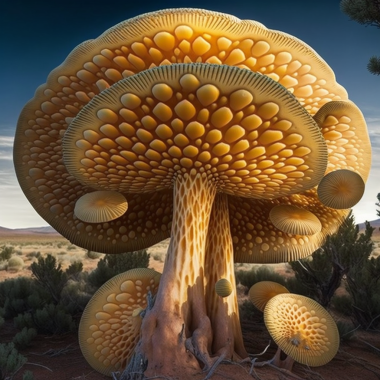
Introduction
The world is full of fascinating and awe-inspiring natural wonders that continue to amaze us even after centuries of scientific discovery. One such wonder is the world's largest living organism, which happens to be a fungus located in Oregon. This incredible organism covers an area of over 2,200 acres and is estimated to be around 2,400 years old. The sheer size and age of this fungus are mind-boggling and have led to many interesting discoveries and studies. In this article, we will explore the world's largest living organism, its characteristics, and its impact on the environment. We will also discuss the significance of preserving this incredible natural wonder for future generations.
What is the Fungus?
The world's largest living organism is a fungus known as Armillaria ostoyae, commonly referred to as the honey mushroom. It is a type of parasitic fungi that lives on and feeds off the roots of trees. The fungus itself consists of a web-like network of thread-like structures known as mycelium. The mycelium acts as the fungus's "body," allowing it to spread and reproduce. The honey mushroom is commonly found in the forests of the Pacific Northwest region of North America, where it can grow to be massive in size.
In terms of appearance, the honey mushroom has a yellow-brown cap with a white stem and gills. While the cap and stem are relatively small compared to the fungus's massive underground network, they are still visible above ground. The honey mushroom also produces fruiting bodies, which are the mushrooms that we commonly see growing above ground. However, these fruiting bodies are not essential to the fungus's survival, as the mycelium is the primary means of spreading and reproducing.
Overall, the honey mushroom is an intriguing and unique organism that has captured the attention of scientists and nature enthusiasts alike. Its massive size and unique life cycle make it a fascinating subject of study, and researchers continue to learn more about its characteristics and behavior.

Age of the Fungus
The Armillaria ostoyae, also known as the honey mushroom, is not only the world's largest living organism in terms of size, but it is also one of the oldest. The fungus is estimated to be around 2,400 years old, making it one of the oldest continuously living organisms on Earth. The age of the fungus was discovered through radiocarbon dating of samples taken from its mycelium, which revealed that the organism had been growing for over two millennia.
Determining the age of the fungus was a challenging process, as it required researchers to take samples from the mycelium and use sophisticated laboratory techniques to extract and analyze the DNA. However, the discovery of the fungus's age has provided scientists with valuable insights into the longevity and survival of such massive organisms.
The honey mushroom's ability to survive for such an extended period is due in part to its unique life cycle. The fungus is parasitic and feeds off the roots of trees, allowing it to sustain itself even when food sources are scarce. Additionally, the mycelium of the fungus can regenerate new fruiting bodies even after the original ones have died, allowing the organism to continue to spread and reproduce.
Overall, the age of the honey mushroom is a remarkable testament to the resilience and longevity of the natural world. It reminds us of the incredible adaptability of living organisms and their ability to thrive in even the harshest of environments.
Environmental Impact
While the honey mushroom itself is not harmful to the environment, its massive size and growth patterns can have significant impacts on the surrounding ecosystem. The fungus is a parasitic organism that feeds on the roots of trees, which can weaken and even kill them over time. This can lead to changes in forest composition and structure, as well as an increased risk of wildfires due to the accumulation of dead and dry plant material.
Furthermore, the honey mushroom can also affect soil quality by altering nutrient cycles and reducing the amount of organic matter in the soil. This can have cascading effects on the entire ecosystem, as healthy soil is critical for maintaining plant and animal biodiversity.
Additionally, the honey mushroom's ability to regenerate new fruiting bodies even after the original ones have died can result in the rapid spread of the fungus. This can lead to the formation of massive colonies that can displace other plant and animal species, further altering the local ecosystem.
Overall, while the honey mushroom is a fascinating and unique organism, its growth patterns and parasitic nature can have significant impacts on the surrounding environment. It is essential to continue studying the fungus's behavior and impacts to better understand how to manage and mitigate its effects on the ecosystem.
Conclusion
In conclusion, the Armillaria ostoyae, or honey mushroom, is a remarkable organism that holds the title for the world's largest living organism in terms of size and one of the oldest continuously living organisms on Earth. While its massive size and age are impressive, the honey mushroom's parasitic nature and growth patterns can have significant impacts on the surrounding environment, including changes in forest composition and structure, alterations to soil quality, and the displacement of other plant and animal species.
The discovery of the honey mushroom's age and size highlights the incredible adaptability and resilience of living organisms, as well as the need to continue studying and understanding the impacts of such massive organisms on the environment. By doing so, we can better manage and protect our natural resources for future generations.
